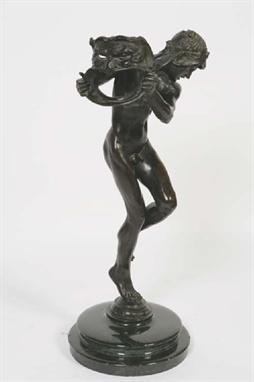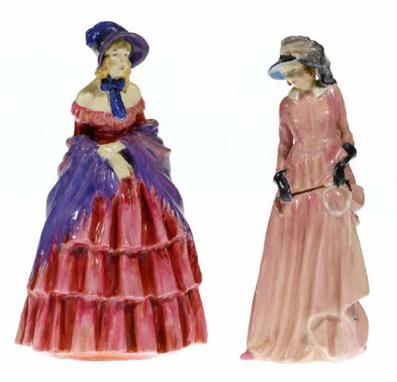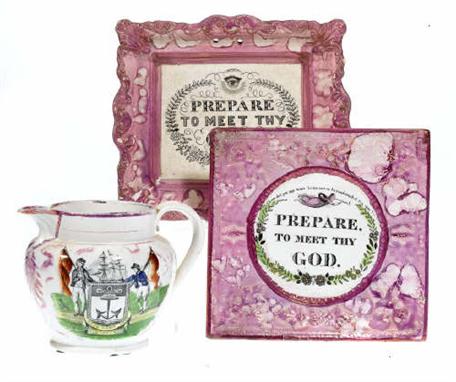Milne (Alan Alexander). Winnie-the-Pooh, First Edition, ink ownership signature on the half-title, original green cloth, gilt, head and foot of spine and corners slightly bumped, [1926]; The House at Pooh Corner, First Edition, small stain to half-title, original pink cloth, spine nicked, a little faded, [1928] - and a 12th Edition of When We Were Very Young. (3)
We found 596780 price guide item(s) matching your search
There are 596780 lots that match your search criteria. Subscribe now to get instant access to the full price guide service.
Click here to subscribe- List
- Grid
-
596780 item(s)/page
Stoker (Bram). Dracula, First Edition, later issue, with 6pp. of adverts. at end, ink ownership signature on half-title, endpapers slightly browned, a few blank upper margins with dampstains at end, original yellow cloth, soiled and shaken, hinges broken, the spine darkened and with small (c.1cm.) tears at head and foot, edges rubbed, corners knocked, a little cockling to covers, [Shadows in the Attic p. 46], 1897.
Tolkien (John Ronald Reuel). [The Lord of the Rings]: The Fellowship of the Ring, first edition, original cloth, dust -wrapper, [1954]; The Return of the King, First Edition, original cloth, dust-wrapper, [1955]; together 2 vols. of the 3 (without The Two Towers), both wrappers with sunned spine and slightly rubbed at heads of spines. (2)
1930's Art Deco white painted wooden dolls house with a first floor balcony and double garage, front opening enclosing four rooms with the staircase to the right hand side, on a painted base with four detachable legs, 107cms by 48cms by 59cms. Together with a quantity of dolls house furniture and accessories and a yellow painted dolls high chair (qty)
19th century wooden painted German dolls house with a pull out garden possibly by Christian Hacker. It is front opening enclosing four rooms all with papered decoration and attic bedroom with roof access. The right hand side of the house has a balustraded balcony and veranda terrace to the ground and first floor with stylised railings, 55cms by 68cms by 39cms. Together with assorted furniture including white painted bedroom suite with C Hackers distinctive blue stencilled decoration.
A silver straight-sided oval tea caddy with spoon by George Unite & Sons, Birmingham 1925, with an oval finial to the cover concealing the spoon, the body with reeded borders, 9.5cm (3.75in) high, two silver christening mugs, the first with an S-scroll handle a reeded rim and a stiff leaf base by Mappin & Webb, London 1911, presentation engraved, 8.5cm (3.25in) high, the second plain with a loop handle by Walter & Charles Sissons, London 1903, presentation engraved, 8cm (3.25in) high and a German silver coloured example by Wilhelm Binder, post 1886 .800 standard, straight-tapered with a broad textured band and a faux bamboo handle, monogrammed, 8cm (3.25in) high, 691g (22.25 oz) gross (4)
CIRCLE OF SIR GODFREY KNELLER A portrait of a gentleman, probably Sir John Crewe of Utkinton, wearing a lace jabot, inscribed on the reverse, oil on canvas, 291/4 " x 241/4 ". The reverse of the canvas bears the name of "Mr Crewe" but it probably represents Sir John Crewe of Utkinton, son of John Crewe (second son of Sir Randolph Crewe) and Mary Dunne; born 1641. He married first, Mary, daughter of Thomas Wagstaff, of Catchebrook, Co. Warwick and secondly Mary, daughter of Sir Willoughby Aston, Bt. "He revered the memory of his excellent grandfather, Sir Randolph, who familiarly called him in childhood his "Jolly Jack". He was a portly gentleman as his portrait bespeaks". (Hinchliffe, Barthomley page 366).
ALEXANDER MUNRO RA: A white marble bust of Kenneth James Matheson (Second Baronet of Lochalsh) looking slightly to dexter and wearing a shirt with a lace collar and tassels, on a marble socle, 20" high. Provenance: Alexander Matheson, later Sir Alexander Matheson, and thence by descent to the vendors. Exhibited: Inverness Museum and Art Gallery from 1994 until August 2008 The Birmingham City Art Gallery, January - March 1992 - "Pre-Raphaelite Sculpture: Nature and the Imagination in British Sculpture 1848-1914". According to Rupert Gunnis in "Dictionary of British Sculptors 1660-1851": "Alexander Munro's father was a stonemason employed on the Duke of Sutherland's property in Scotland and his artistic abilities were brought to the notice of Harriet, Duchess of Sutherland, wife of the Second Duke, who assisted in his education". In 1848 she brought the young man to London and introduced him to Sir Charles Barry, who employed him on the sculpted works intended for the Houses of Parliament which were then under construction. Munro soon turned to portrait- sculpture and produced a number of busts. According to Redgrave his works were of "true genius and feeling and graceful and spirited". It is as a sculptor of children, however, that he is celebrated and Rupert Gunnis refers to a number of groups including "the Matheson children" (1861). Alexander Munro is regarded as a pre-Raphaelite sculptor. He met Rossetti at the Royal Academy, who confided in Munro about his secret signing of the pre- Raphaelite brotherhood. His work embodies the ideals of the pre-Raphaelites combining formal purism that harks back to early Italian Renaissance models with the realism of Holman Hunt and Millais. Between 1852 and 1858 he lived with another pre-Raphaelite, Arthur Hughes. Kenneth Matheson (1854-1920) was the eldest son of Alexander Matheson, who returned from a successful business career in China to become a leading Scottish landowner and MP for Inverness Burghs. In 1882 he became First Baronet of Lochalsh. Kenneth and Mary (see lot 437) were his children by his second wife, Lavinia Mary Stapleton, who died tragically by drowning in Loch Duich on her way to church in 1855. They were brought up by their Great Aunt until their father remarried in 1860, apparently the year in which this bust and lot 437 were executed. See lot 437
SIR ALFRED GILBERT: A bronze of "Comedy and Tragedy": "Sic Vita", the bronze 27" high, on a circular serpentine base, 303/4" high overall including the base. Provenance: The Collection of J.P. Heseltine Esq. Acquired by Robert Worthington, Esq. OBE, FRCS of Exeter, Devon, from Gooden and Fox in February 1931 for £100 (the original invoice included with this lot). Worthington was a prolific collector and the purchase is also recorded in his notebook. Literature: The Easter Art Annual, 1903 Sir Alfred Gilbert spoke of "Comedy and Tragedy" as "The climax to my cycle of stories". In one sense it is autobiographical, the commentary on Gilbert's state of mind at the time of its' creation: mounting debt, difficulties with patrons and a sick wife forced him to live with continual anxiety, though what the world saw was a supremely successful sculptor and social figure publicly moving from one triumph to another. The stature shows a stage-prop boy running with the mask of Comedy in his hands at the moment he is stung by a bee. From one side, the statue is dominated by the comic mask; from the other the boy's expression forms a tragic mask. The statue needs to be seen in-the-round to appreciate the twisting of the angular muscular form into a complex and artificial pose. The title for the bronze comes from W.S. Gilbert's one-act play "Comedy and Tragedy", which was staged in a revival at the Lyceum with Gilbert's friend, the American actress Mary Anderson, in the leading role. A pen and ink sketch "Comedy and Tragedy" (first idea) "December III 90 Alfred Gilbert" shows a winged putto leaping to avoid an arrow shot at his right leg. Gilbert was just beginning to think about the figure of Eros for the Shaftesbury Memorial at this date, so the arrow in the drawing may be identified as the one Eros has just shot from his bow. The model for Eros, Angelo Colorossi, recalled that before posing for that statue he had posed for "Comedy and Tragedy". The latter was begun on 2nd February 1891 and advanced throughout the month. Gilbert noted in May of that year that he had worked on the top of the Shaftesbury Memorial, so Eros followed immediately upon Comedy and Tragedy (Alfred Gilbert, Royal Academy of Arts 1986 - The Great Bronzes 1881-1892). This lot is sold with Robert Worthington's personal copy of "Alfred Gilbert" by Isabel McAllister, published London 1929 and the original of sale dated 16th February, 1931.
Three cigarette cases and a powder compact, comprising an oblong engine turned, initialled and gilt banded example by Sampson Mordan & Co., London 1920; one engine turned rectangular, London 1956; an engine turned and banded silver coloured example, stamped '925' and a butterfly; the compact with linear decoration and a gilt thumbpiece by Asprey & Co. Ltd, London 1947, in a fitted case from Asprey & Co., the first three 408g (13 oz) gross, the latter inset with a mirror
The Royal Household 1992 Jaguar Sovereign 4.0 automatic saloon Registration No K194 BAC finished in Westminster Blue with doeskin hide upholstery and many extras including walnut picnic tables. Mileage approx 107,000 with service history, MOT until 12.8.2009. Used for official functions by Diana Princess of Wales - sold with DVD with her travelling in it and extensive history file (we are currently awaiting confirmation from the DVLA relating to the first registered keeper being the Royal Household). ONLY 5% BUYER'S PREMIUM ON THIS LOT
A Set of Four Important Elizabethan Revival Chairs in the manner of Anthony Salvin dating from the first half of the 19th century and assumed to be commissioned by William Crawshay the Second for Cyfarthfa Castle, Wales. Each of the architectural style chairs having a semi-circular arch of pollard oak above the top rail containing a relief carved English Mastiff surmounting a pile of canon balls. The pollard oak panel backs centred by the Crawshay family crest & coat of arms within deep cavetto moulded strap-work flanked by half column pilasters with domed anthemion carved finials. The solid oak seats having incised moulding and turned ebony roundels adorning the seat rails raised on curved X-form legs united by floral stretchers. Each screw hole concealed with a wooden plug. Accompanied by a folder of correspondences and relevant information from Cyfarthfa Castle Museum who borrowed the chairs to exhibit them in the library in April 2006.
A Pair of Fine Mahogany Chairs Circa 1820 Stamped Thomas Wilson of 68 Great Queen Street London. The profusely carved backs with eagle heads to the top rails issuing trailing foliage leading down the swept uprights flanking broad pierced splats centred by paterae and embellished with Rococo scrolls and pendant chains of bell flowers. The upholstered seats re-covered in yellow damask and raised on bold eagle carved cabriole legs terminating with hairy paw feet. The name Wilson first appears in the Trade Directories in 1821 however a recently discovered Trade Label giving the date established as 1818 and stating that Wilson's were Cabinet makers as well as retailers indicates that their stock was made up of not only second hand furniture but also items made in their own workshops. Between 1830-37 Thomas's wife continued the Business. by 1838 their son Matthew had taken over and continued until 1854. These chairs are earlier and would have been retailed by the Company.
DAVID HOCKNEY (BRITISH, B. 1937) MYSELF & MY HEROES Etching and aquatint, signed, dated 1961, edition of 50 29.5cm x 49.5cm (10.2in x 19.5in) Notes: 'Myself and My Heroes' was David Hockney's first print which he made on arriving at the Royal College of Art, London. The work shows the artist beside a haloed Mahatma Gandhi and Walt Whitman.
A near matching pair of Edward VII silk trumpeter's banners with raised silk and wirework decoration of a Royal Coat of Arms surmounted by initials "ER" and winged seraphs within a scrolling foliate decorated border and tasselled edges, approx. 54 x 42.5 cm (Provenance: Thought to be from the First Life Guards Regiment Property of the Commanding Officer who was in the Regiment circa 1898-1920 and commanded the First Life Guards during the First World War)
Milne (AA) Winnie The Pooh, Methuen 1926. First Edition, First Impression, 8vo, 158pp, gilt stamped green cloth, inscription "EM Brockhurst, from Bean" to front free endpaper dated 24-10-1926 (date of publication) two minor nicks to covers otherwise fine condition ; When We Were Very Young, Methuen 1926 (thireteenth); Plus One Other, unrelated. (3)
A pair of English bone china spill vases, perhaps Spode, of trumpet form and painted in pink and gilt with roses, 13cm high, painted pattern no. 5462; a pair of similar mugs, 11cm high, painted pattern no. 5206 and a Staffordshire bone china loving cup painted with insects and flowers, 13cm high, various dates first half 19th century
A large engraved commemorative rummer, the generous ovoid bowl bearing initials RHW, within a foliate wreath, verso with pheasant, sported on plain stem and conical foot, 19.5cm high; and another engraved goblet with a fluted bowl decorated and polished with a band of fruiting vine supported on a faceted baluster stem, 16cm high, first half 19th century
Manner Of Joseph Wright Of DerbyVesuvius In Eruption, a dramatically illuminated evening scene, with figures in a fishing boat and observing from the shoreOil on canvasBears initials JW and inscribed 'Roma 1782' lower right74cm x 100cm. Joseph Wright left for Italy in 1773, arriving in Rome in 1774. In the same year he visited Naples and after viewing Mount Vesuvius described it as 'the most spectacular sight in nature'. He returned to England in 1775 and exhibited the first of his Vesuvius pictures in 1776. Provenance: Wychdon Lodge, Hixon, Staffordshire
An impressive and comprehensive collection of Swiss stamps in 7 Simplex Albums inc 1850 II 10r FU, seated and standing Helvetias, Pro Juventute sets from 1915-1920 to dateUM/FU, 1919-1920 Air 50c optFU, 1928-31 High Values M and FU, 1936 Defence M/S, Prop patria issues from 1938, 1943 First Stamp M/S both types, 1945 Peace set FU, 1948 IMABA M/S M and UM/M/FU issues to date.
A rare Sunderland pink marbled lustre earthenware plaque, printed in black and enamelled in green, yellow and pink with a heralding angel, psalm and PREPARE, TO MEET THY GOD, the border moulded with foliage, 21 x 20cm; a similar plaque, with integral frame and a Sunderland jug, printed and painted with the MARINER'S ARMS and verse, all c1840 (3) With its elaborate moulded border, the first plaque is unusual. Another example was in the Tolson Collection, sold Sotheby's , 5 February 1998, lot 414. ++The first plaque a very good example in fine condition. The second plaque cracked with small area of flaking in consequence. The jug in good condition with some wear to the pink lustre
A Staffordshire pearlware figure of a musician and a similar figure of the Welch Tailor's Wife, the first seated on a stump playing the bagpipes, both painted in bright enamels with blue scrolls to the foot or base, 17 & 19cm h, c1820; a Staffordshire earthenware model of a bird and a slightly later porcelaneous miniature group of a young shepherdess on lavender sprigged mound, both 19th c (4). ++Welsh Tailor's Wife - base broken and glued with small areas of over-painted repair, lacking one of the goat's horns. Bagpiper - one foot damaged, the 'bocage' and one of the two feathers forming the plume on the hat chipped. Neither with any modern professional restoration. The two other items in the lot in good condition.
-
596780 item(s)/page


![Tolkien (John Ronald Reuel). [The Lord of the Rings]: The Fellowship of the Ring, first edition, original cloth, dust -wrappe](http://lot-images.atgmedia.com/SR/10119/2748820/68-120-10119_468x382.jpg)









































